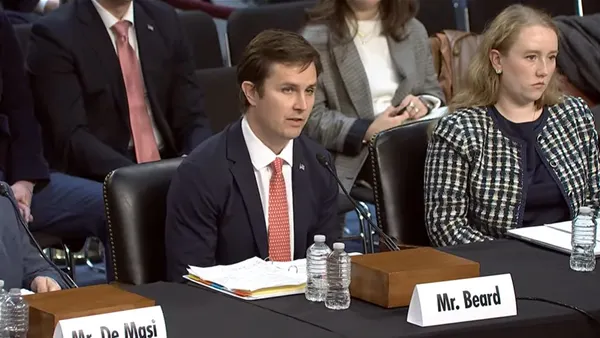Dive Brief:
- Amazon is listing more of its distribution facilities for sublease in recent months as it works to shed excess space in its fulfillment network, according to data from commercial real estate information company CoStar.
- In October, the e-commerce giant listed roughly 1.5 million square feet of its industrial space for sublease, the most since September 2022, per CoStar. Recent listings include warehouses in the Atlanta area, San Antonio and Fort Worth, Texas, all of which were built during the pandemic-driven e-commerce boom.
- "What's different this round is that more of the company's recent space offerings involve sublease opportunities through 2030 and beyond, in larger, newly built distribution properties," according to CoStar's report.
Dive Insight:
Amazon's quest to offset the costs of its overexpansion, when it doubled the size of its fulfillment network in roughly two years, appears to be ongoing.
The company has closed and delayed several U.S. warehouses to reduce operating expenses. Amazon also had plans last year to sublet at least 10 million square feet, Bloomberg reported, as it grappled with excess warehouse capacity.
“Subleasing is a commonly used industry practice that gives companies flexibility based on operational changes," said Steve Kelly, an Amazon spokesperson, in an emailed statement to Supply Chain Dive.
Amazon's fulfillment network is still massive, even with the company's subleasing push. It had more than 428 million square feet of U.S. distribution infrastructure in Q3, according to MWPVL International, a consultancy that tracks Amazon's logistics footprint.
Amazon's total U.S. logistics square footage in operation hasn't changed significantly in 2023, as new leases it signed this year offset subleasing activity, per CoStar. New leases were mainly in markets with limited space during the pandemic, including the San Francisco Bay area and Pennsylvania's Interstate 81 corridor, a warehousing hotspot serving northeast markets.
The company's logistics network adjustments extend beyond new leases and subleases. Amazon completed its shift to a regional fulfillment model earlier this year, in which eight regions handle shipping in a largely self-sufficient manner. This has helped Amazon boost stock levels, shorten delivery routes and accelerate shipping speeds.














